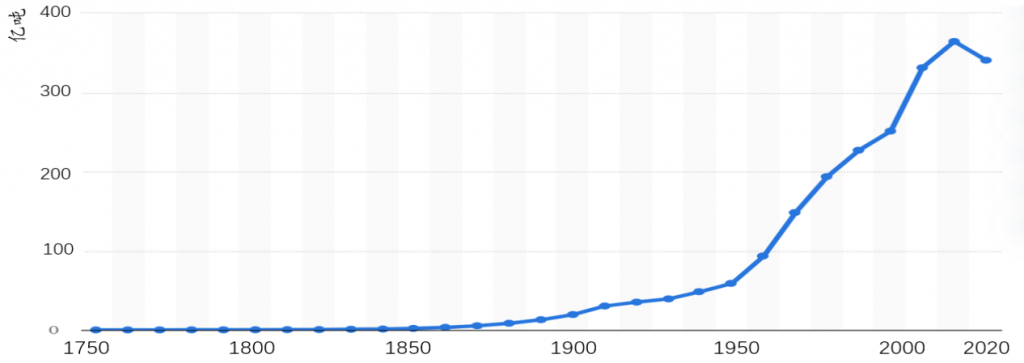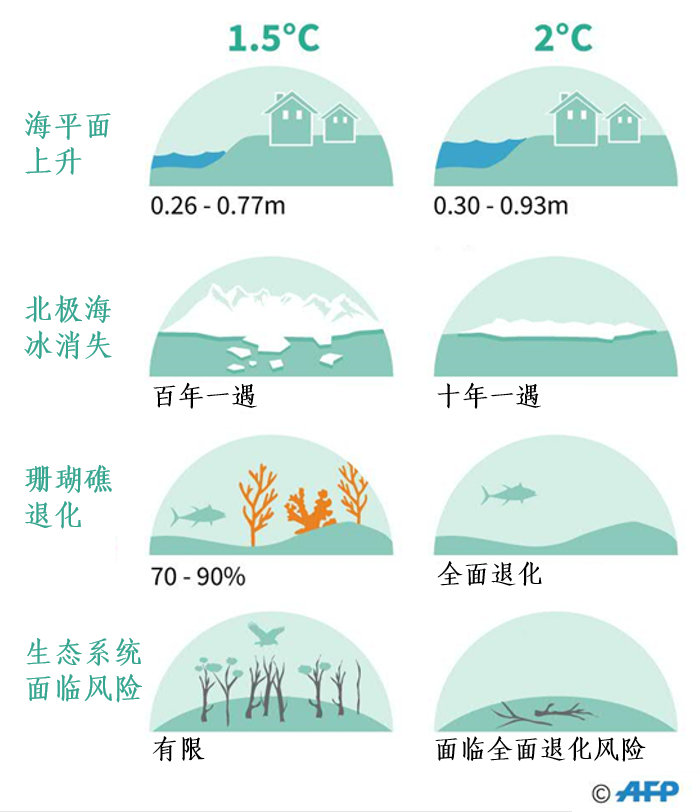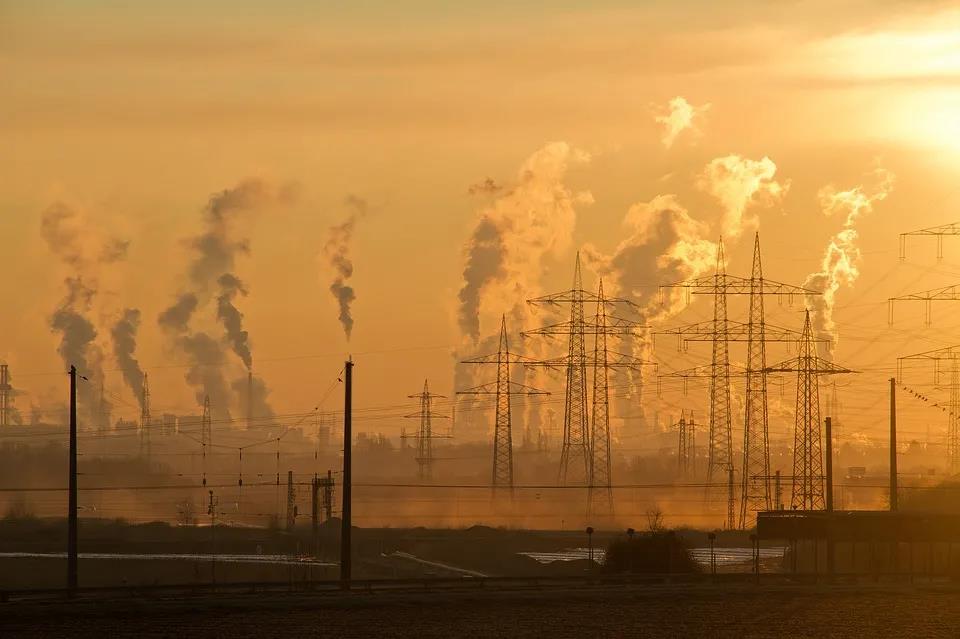Author: Zeng Lu
Last September, General Secretary Xi Jinping promised at the United Nations to strive to peak carbon emissions before 2030 and strive to achieve carbon neutrality before 2060. What is carbon neutrality? Why set a carbon neutrality target?
Total words1713About6minutes
Carbon dioxide and other greenhouse gas emissions exacerbate climate crisis
Emissions of greenhouse gases such as carbon dioxide produced by human activities continue to rise. Since the Industrial Revolution, economic growth and strong demand for fossil energy have continued to push up global carbon dioxide emissions. In 2019, total global carbon emissions reached 34.17 billion tons. The COVID-19 epidemic has caused a significant reduction in global emissions in 2020, and it is expected that greenhouse gas emissions will resume an upward trend after economic recovery. Climate change caused the Earth's temperature to rise by 1°C in 2017 above pre-industrial levels. At current emissions rates, global temperatures will catastrophically rise by more than 3°C by the end of the century, well above the goals of the Paris Agreement.
Global fossil fuel and industry-related CO2 emissions (1758-2020)

If left unchecked, climate change may jeopardize the future of humanity. Climate change intensifies extreme weather such as droughts, heat waves, heavy rains, and floods, and leads to serious consequences such as rising sea levels and loss of biodiversity. If left unchecked, climate change will have a comprehensive impact on the earth and ultimately endanger human survival and development. The Intergovernmental Panel on Climate Change (IPCC) Special Report on Global Warming of 1.5°C predicts that controlling global warming below 2°C by the end of this century will reduce the impact of climate change on human well-being, ecosystems and sustainable development. risks; controlling global warming to 1.5°C will have more benefits for humans and ecosystems.
Different increases in global average temperature will have huge differences in the impact on the climate in 2021

What are the main sources of global carbon emissions?
The G20 accounts for 78% of global emissions. The G20 is composed of China, Argentina, Australia, Brazil, Canada, France, Germany, India, Indonesia, Italy, Japan, South Korea, Mexico, Russia, Saudi Arabia, South Africa, Turkey, the United Kingdom, the United States and the European Union. , is the main source of global carbon emissions. In the past decade, China, the United States, the 27 EU countries, the United Kingdom and India contributed more than 55% of global greenhouse gas emissions, while the 100 least emitting countries and regions accounted for less than 3% of global emissions.
G20 greenhouse gas emissions account for 78% of global emissions

Saudi Arabia, Australia, the United States and others lead the way in per capita greenhouse gas emissions

Three-quarters of global greenhouse gas emissions are energy-related. In 2016, energy-related emissions accounted for 73% of global greenhouse gas emissions, with electricity and heating, transportation, and manufacturing accounting for the largest proportions. In addition, agriculture, industrial processing, etc. are also important sources of global greenhouse gases.
Carbon neutrality is the only way to combat climate change
The Paris Agreement is an important milestone for the international community to jointly address climate change. The 2015 Paris Agreement aims to significantly reduce global greenhouse gas emissions, control global temperature rise within 2°C by the end of this century, and seek to further control it within 1.5°C. The task of achieving this goal is very urgent. According to the IPCC report, to achieve the goal of not exceeding 2°C in warming, the world needs to reach carbon neutrality around 2070; to achieve the goal of 1.5°C, the world needs to reach carbon neutrality around 2050. and. The United Nations Framework Convention on Climate Change requires parties to communicate long-term greenhouse gas emission targets for mid-century by 2020. Therefore, governments since 2018 have pledged to achieve carbon neutrality by around 2050.
Paris climate agreement
Carbon neutrality, net zero emissions, and climate neutrality all mean different things. Carbon neutrality refers to the balance between carbon dioxide emissions caused by human activities and man-made carbon dioxide absorption within a certain period of time. Net zero emission refers to the balance between greenhouse gas emissions caused by human activities and man-made emission absorption within a certain period of time. Climate neutrality refers to a state in which human activities have no net impact on the climate system, which means striking a balance between greenhouse gas emissions, emission absorption, and the biophysical effects of the earth in a specific region. In other words, a carbon neutral target only considers carbon dioxide, a net zero target includes all greenhouse gases such as carbon dioxide and methane, and a climate neutral target considers all greenhouse gases and other impacts such as radiative effects.
What is carbon neutrality?

Climate governance requires cross-sectoral and multi-level international cooperation around the world. Climate change is a global challenge facing mankind, affecting many fields such as energy, finance, food security, and health. Climate governance requires governments, enterprises, social organizations and other stakeholders around the world to participate extensively and carry out cross-departmental and multi-level cooperation.
First published: NGO Observation
references
https://www.world-energy.org/article/14500.html
https://www.wri.org/insights/4-charts-explain-greenhouse-gas-emissions-countries-and-sectors
https://www.wri.org/insights/interactive-chart-shows-changes-worlds-top-10-emitters
https://www.macrotrends.net/countries/CHN/china/carbon-co2-emissions
https://www.macrotrends.net/countries/USA/united-states/carbon-co2-emissions
https://www.macrotrends.net/countries/EUU/european-union/carbon-co2-emissions
https://news.sina.com.cn/c/2021-06-02/doc-ikqciyzi7278133.shtml
https://www.diva-portal.org/smash/get/diva2:1380853/FULLTEXT01.pdf
https://finance.sina.com.cn/tech/2021-06-11/doc-ikqcfnca0546161.shtml
https://www.cenews.com.cn/newpos/sh/gd/202106/t20210603_976533.html
https://finance.sina.com.cn/money/future/roll/2020-11-08/doc-iiznctke0283567.shtml
https://sustainability.yale.edu/explainers/yale-experts-explain-paris-climate-agreement
https://ednh.news/wp-content/uploads/2018/12/climate5.jpg
Past review

Comment (1)
Alberta206| January 9, 2024
Thanks for the informative and helpful post, obviously everything in your blog is good..